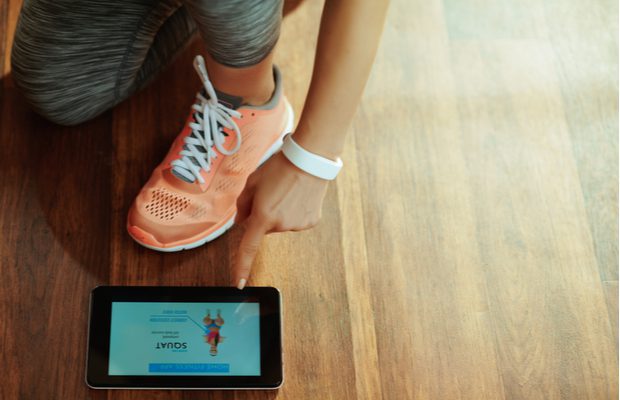During the COVID-19 pandemic, many rec centers didn’t know about reopening dates. However, they did know virtual programming is here to stay. Many departments though learned it might not be enough to keep doing what they’ve been doing since the beginning of the pandemic to keep students engaged.
Below, three schools share virtual program strategies they have found most successful, and the ideas and advice they have for keeping virtual programming engaging.
Texas State University
At Texas State, group exercise has been the most popular virtual program from the beginning, and they are working on a way to grow and expand virtual personal training options. Josie Wielinski, the fitness and wellness coordinator, said one of their concerns moving forward was deciding whether or not to require a membership for virtual programming.
“We have decided to offer any virtual programming to anyone without membership to our recreation center; however, they must be associated with the university,” said Wielinski. “There will be separate pricing for non-student recreation center members, and starting in the fall, we plan on launching a nutrition coaching program that will be open to anyone associated with the university as well.”
Wielinski said her team’s thought process in making this decision came down to a few key points:
- Some people may not feel comfortable returning to the facility right away. Continuing these virtual programs allows individuals to stay connected to the rec center.
- Virtual programming makes the services more accessible to those who may not have the time in their day to come to the rec center or don’t feel comfortable working out with students in the same space as the non-member opportunity mostly target faculty and staff.
- This type of programming is marketing. It gives people who may be considering a membership an opportunity to preview what the rec centers has to offer.
There has been talk of virtual fatigue, and a dip in participation as students finish up finals and gear up for summer. Wielinski’s team is scheduling classes more strategically by pairing shorter classes back to back on their virtual schedule to help with this.
“This way someone can take a HIIT class paired with some strength work for a full hour workout, or someone can choose to attend one class and not the other,” described Wielinski. “This provides more flexibility so people can fit in exercise however works best for them. We also have added more of the classes with higher popularity to the schedule, such as HIIT, strength and Barre.”
Lastly, to keep virtual engagement, Wielinski said her team is considering highlighting a few classes on Instagram and Facebook Live to gain more exposure and to give students a peek of the classes before committing to a full Zoom class.
Auburn University
Christy Coleman, the assistant director of group fitness at Auburn, described their plans as ever changing. “We have decided to phase in classes going from all virtual in Phase One to a blend in Phase Four,” she said. “As we explore virtual, we are discovering Zoom classes to be more effective for us, and livestreaming through social media platforms to be a better way to show clips or demos of what we offer.”
Coleman’s best advice is to be adaptable and to keep going. She stated what works for one school may not work for another, so it’s necessary to listen to others but adapt advice to fit your school and personality.
“Virtual classes are here to stay — just like live classes, these classes will evolve and morph into something all their own over time,” she said. “I definitely think we are all in this together to figure out best practices and learn from one another. I can’t wait to see how everything comes together. By next year it may look totally different, but in a good way.”
Illinois State University
At Illinois State University, virtual programming will be open to anyone and everyone throughout the summer. Once the facility is reopened, these classes will be limited to the Illinois State University community.
“It’s been demonstrated that physical activity has extreme benefits for an individual’s health, and we believe this situation our country faces shouldn’t be a barrier to physical activity, no matter who you are,” said Krista Gooris, the assistant director of fitness. “By allowing anyone to access our virtual group fitness programming, we are continuing to create and establish community. It’s been a joy to see our instructors and participants invite friends or family members from across the country to participate in a program they are so proud of.”
Virtual programs bringing in the highest participation numbers since April consist of mind-body classes such as yoga flow and Pilates — both classes that have little to no equipment needed.
Additionally, Gooris also expressed her team is extremely aware of virtual fatigue, and as they work on reopening, they plan to offer “hybrid participation” for fitness programs to decrease screen time.
“We will give the opportunity for a small number of participants to register to take a class in-person at our facility, and we will also be live streaming that class to reach those at home,” said Gooris. “The same goes for engaging and training our fitness team members. We are looking at what continuing education can we offer online and how can we implement small group meetings to aid in decreasing screen time.”











